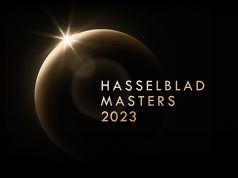
Poway, CA—Pixon Imaging, a technology development firm specializing in real-time image and video enhancement, introduced its new Extended Dynamic Range Architecture. ExDRA is a software technique that improves low-light imaging in mobile phone and other CMOS/CCD-based cameras.
The technique utilizes charge binning. It combines a full megapixel image of bright objects with a higher-sensitivity binned image of faint objects, in one frame time.
The company claims that ExDRA delivers low-light performance that is an order of magnitude (or better) than current methods. For example, Google’s new Pixel 3 “night sight” function employs up to 15 images to improve low-light sensitivity. This mimics the sensitivity of a longer exposure.  However, it requires stationary objects “and cannot approach the sensitivity of the algorithmically simpler ExDRA. Alternative performance improving methods employed by other cell phone manufacturers require the use of multiple cameras, adding hardware costs and software complexity,” explained Rick Puetter, Pixon’s chief scientist.
However, it requires stationary objects “and cannot approach the sensitivity of the algorithmically simpler ExDRA. Alternative performance improving methods employed by other cell phone manufacturers require the use of multiple cameras, adding hardware costs and software complexity,” explained Rick Puetter, Pixon’s chief scientist.
“The ExDRA technique captures both the high-resolution and high-sensitivity images simultaneously from a single CMOS/CCD sensor,” said Puetter. “This makes it possible to produce images and videos of scenes in low light with exceptional clarity and uniformity.”
Moreover, ExDRA is software that will integrate into next-generation mobile phone cameras. It can also be implemented as an app, with little lead time, for use with existing devices.
Pixon Imaging
A Micro USA Inc. company, Pixon Imaging develops software and hardware products based on the patented Pixon Method for deblurring and denoising images. Moreover, the company’s technology base includes proprietary algorithms for contrast enhancement, dehazing and noise reduction.
While focusing on real-time video image processing in particular, Pixon technologies are equally applicable to still-image and off-line video processing.





